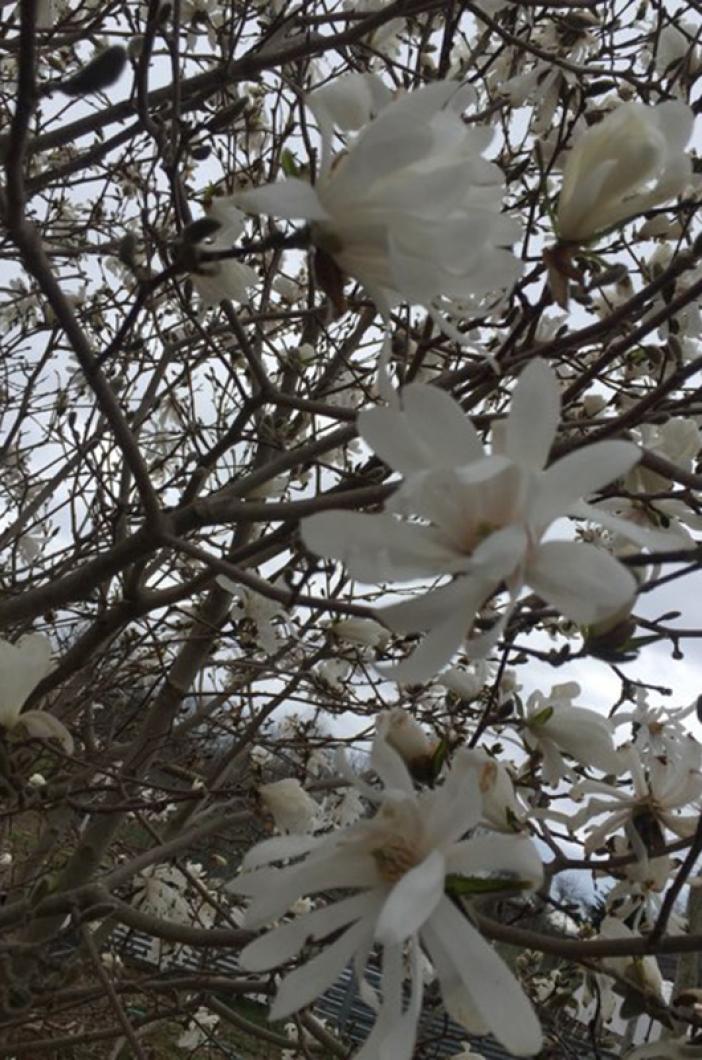Bob Gilkes of Edgartown had an observation that brings good news. He explained “For my fisherfriends, this royal magnolia’s spring flowering has accompanied the arrival of Island stripers for the past 20 years. Keepers should be here soon.”
Eaters can rejoice on both accounts — flowers and fish can be food. While most of us know of the deliciousness of freshly caught striped bass, many may not realize that the inclusion of magnolia makes for a culinary double header!
The magnolia is an ancient tree. Relatives from its scientific order emerged over 95.5 million years ago. This clearly gave folks enough time to figure out how they could use this showy tree for nourishment and health. And they did, and still do.
The bark, blossoms, and even leaves are edible. The flower petals can be consumed raw and have a spicy, intense flavor that matches its scent. Some say the flavor is reminiscent of rose, but meatier.
However, the most common way to consume magnolia blooms comes from England, where the petals are pickled in a sweet and sour brine. Ask me how they are, since I have a freshly prepared jar of pickled petals in the refrigerator — the result of my research and a friend with flowering trees. Other suggestions to sample include magnolia-infused honey or simple syrup. Another of last weekend’s creations is magnolia liquor, which will be ready for tasting after only a few days.
Another part to enjoy is the leaves. Both magnolia graniflora and magnolia virginiana have leaves that can be a substitute for bay leaves to flavor soups and stews. Sources suggest that one not use an entire leaf, but cut it and use smaller pieces due to the leaf’s reputed strength. I can’t comment on the flavor of these leaves, as they have not yet emerged on most of the magnolias. On this tree, the leaves arrive after the flowers bloom.
Both the leaves and bark can be made into an herbal tea which is believed to aid in the treatment of rheumatism and malaria, in addition to dysentery, diarrhea and fevers. And smokers take heart; there is an easy way to quit — magnolia bark tea will cure you of your addiction. Lastly, a decoction of the bark is good for the skin, assuaging the itch of rashes and insect bites.
Even the buds have a place on your plate. Asian cuisine includes magnolia dishes of boiled leaves, powder spice made from the dried and crushed leaves, and a seasoning for miso. The magnolia-flavored version of the soup is called hoba miso.
If you do wish to try these tree treats, follow these few recommendations. Don’t take every flower petal on a single tree. Instead, use only a few from many trees so as not to ruin the visual appeal of these magnificent specimens. And, of course, partake only from plants that have not been sprayed with chemicals. It is a caution-filled world we (necessarily) live in.
And finally, be sure to get permission to pick flowers from others’ lands. Never Steal Magnolias.
Suzan Bellincampi is director of the Felix Neck Wildlife Sanctuary in Edgartown, and author of Martha’s Vineyard: A Field Guide to Island Nature.




Comments
Comment policy »